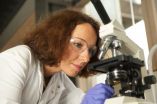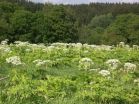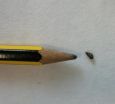(Press-News.org) Medicines for Malaria Venture has developed a framework to evaluate the risk of resistance for the antimalarial compounds in its portfolio. A paper based on this work: A framework for assessing the risk of resistance for antimalarials in development has been published in the Malaria Journal today.
Resistance defines the longevity of every anti-infective drug, so it is important when developing new medicines for malaria, to check how easily promising antimalarial compounds will select for resistance. Once this is known, it facilitates the prioritization of not only the most efficacious compounds but also the most robust ones.
"By profiling our portfolio as early as possible in terms of resistance liabilities, be they pre-existing or acquired, we are attempting to ensure that none of the compounds will fall to potential resistance," said Tim Wells, Chief Scientific Officer, MMV, and one of the authors of the paper. "This will also help us cost-effectively accelerate the drug development process, and be prepared in advance with a full resistance profile which is required by regulatory authorities before a new drug can be approved."
A cross-resistance test using a panel of multi-drug resistant strains of the parasite will check for pre-existing resistance liability. This will ensure that none of MMV's compounds are cross-resistant with other drugs, e.g., if a parasite is resistant to chloroquine, its resistance will also be profiled against MMV compounds.
The framework also includes selection experiments in the laboratory that measure how easy it is for the parasite to develop resistance, in other words, the likelihood of the occurrence of mutations that confer resistance. This is achieved by measuring the minimal inoculum for resistance (MIR) – the minimum number of parasites from which a resistant one is likely to be selected by drug pressure. Although this is already being done, the framework offers a standard, systematic method.
This new framework will result in a fully profiled portfolio for MMV in terms of resistance and could also be used by other malaria researchers to test their compounds for potential resistance, measure the genetic ability of parasites to develop resistance and the intensity of the resistance.
### END
MMV develops framework to assess risk of resistance for antimalarial compounds
2012-08-22
ELSE PRESS RELEASES FROM THIS DATE:
More sophisticated wiring, not just bigger brain, helped humans evolve beyond chimps
2012-08-22
Human and chimp brains look anatomically similar because both evolved from the same ancestor millions of years ago. But where does the chimp brain end and the human brain begin?
A new UCLA study pinpoints uniquely human patterns of gene activity in the brain that could shed light on how we evolved differently than our closest relative. Published Aug. 22 in the advance online edition of Neuron, these genes' identification could improve understanding of human brain diseases like autism and schizophrenia, as well as learning disorders and addictions.
"Scientists usually ...
Lack of food increases hospital use by HIV-infected urban poor in SF
2012-08-22
UCSF researchers found that poor HIV-infected individuals living in San Francisco are significantly more likely to visit emergency rooms and to have hospital stays if they lack access to food of sufficient quality and quantity for a healthy life.
"In the prior three months, a quarter of participants in the study reported an ER visit, and just over a tenth reported a hospitalization, which shows that we are dealing with a population with high levels of illness. But the food insecure people were even sicker than the food secure, which is consistent with their experiencing ...
Green tea compound shows promise for tackling cancer
2012-08-22
A compound found in green tea could be a weapon in treatments for tackling cancer, according to newly-published research at the University of Strathclyde in Glasgow, Scotland.
The extract, known as epigallocatechin gallate, has been known to have preventative anti-cancer properties but fails to reach tumours when delivered by conventional intravenous administration.
However, in initial laboratory tests at the Universities of Strathclyde and Glasgow, researchers used an approach which allowed the treatment to be delivered specifically to the tumours after intravenous ...
Glass offers improved means of storing UK's nuclear waste
2012-08-22
ILW makes up more than three quarters of the volume of material destined for geological disposal in the UK. (1)
Currently the UK's preferred method is to encapsulate ILW in specially formulated cement. The waste is mixed with cement and sealed in steel drums, in preparation for disposal deep underground.
Two studies, published in the latest issues of The Journal of Nuclear Materials and European Journal of Glass Science and Technology A show that turning this kind of waste into glass, a process called vitrification, could be a better method for its long-term storage, ...
Losing stream in our battle to predict and prevent invasive species
2012-08-22
Invasive species – plants, animals, and microbes introduced to regions beyond their native range – carry a global price tag of $1.4 trillion dollars. They are responsible for the loss of natural resources and biodiversity, damages to infrastructure, and an uptick in infectious diseases.
Not all non-native species pose a threat. Scientists around the world have spent the last several decades teasing apart the conditions that set the stage for debilitating invaders, like giant hogweed, zebra mussels, or gray squirrels. A number of hypotheses have emerged to help predict ...
Survival without water: A key trait of an aquatic invader to spread
2012-08-22
Nowadays, an increasing number of rivers and lakes are being invaded by exotic snails, which come from remote regions, and even other continents. Such species represent a threat to native species, as they compete for food or space with them.
This is the case of the mudsnail Potamopyrgus antipodarum. This small aquatic snail is native to New Zealand, and has spread throughout rivers, lakes or streams in Europe, Australia, America and Asia. The invasion success of this mudsnail may be partly due to the ability of females to reproduce without participation of males (i.e. ...
Scientists quantify nanofiber health risk to workers
2012-08-22
Health risks posed to people who work with tiny fibres used in manufacturing industries could be reduced, thanks to new research.
Research into the health risks posed by nanofibres – used to strengthen objects from tennis rackets to airplane wings – has pinpointed the lengths at which these fibres are harmful to the lungs.
Nanofibres, which can be made from a range of materials including carbon, are about 1,000 times smaller than the width of a human hair and can reach the lung cavity when inhaled.
This may lead to a cancer known as mesothelioma, which is known to ...
Thinking about kids? Man, you gotta shed the kilos
2012-08-22
Australian scientists studying the impact obesity has on pregnancy, are urging men to get 'match fit' before conceiving to assist with fetal development.
Reproductive experts from the University of Melbourne's Department of Zoology have discovered that a father's obesity negatively impacts sperm, resulting in smaller fetuses, poor pregnancy success and reduced placental development.
While the health risks surrounding obesity and pregnancy have largely been centred on overweight mothers, scientists from the University of Melbourne are putting the onus on men to shape ...
How to act if there is a fire on the AVE
2012-08-22
Researchers at the University of Cantabria have used computer models to analyse the best way to evacuate the Spanish High Speed Train, AVE, in the case of fire. The involvement of the crew in organising the fast transfer of passengers, completing the process before the train comes to a halt and collective collaboration to assist those with reduced mobility are just some of the strategies to be followed.
"In the event of fire on an AVE, two stages should be defined: the first is pre-evacuation in which passengers are transferred from one coach to another while the train ...
Male mice exposed to chronic social stress have anxious female offspring
2012-08-22
BOSTON (August 22, 2012) —A study in mice conducted by researchers at Tufts University School of Medicine (TUSM) suggests that a woman's risk of anxiety and dysfunctional social behavior may depend on the experiences of her parents, particularly fathers, when they were young. The study, published online in Biological Psychiatry, suggests that stress caused by chronic social instability during youth contributes to epigenetic changes in sperm cells that can lead to psychiatric disorders in female offspring across multiple generations.
"The long-term effects of stress can ...




